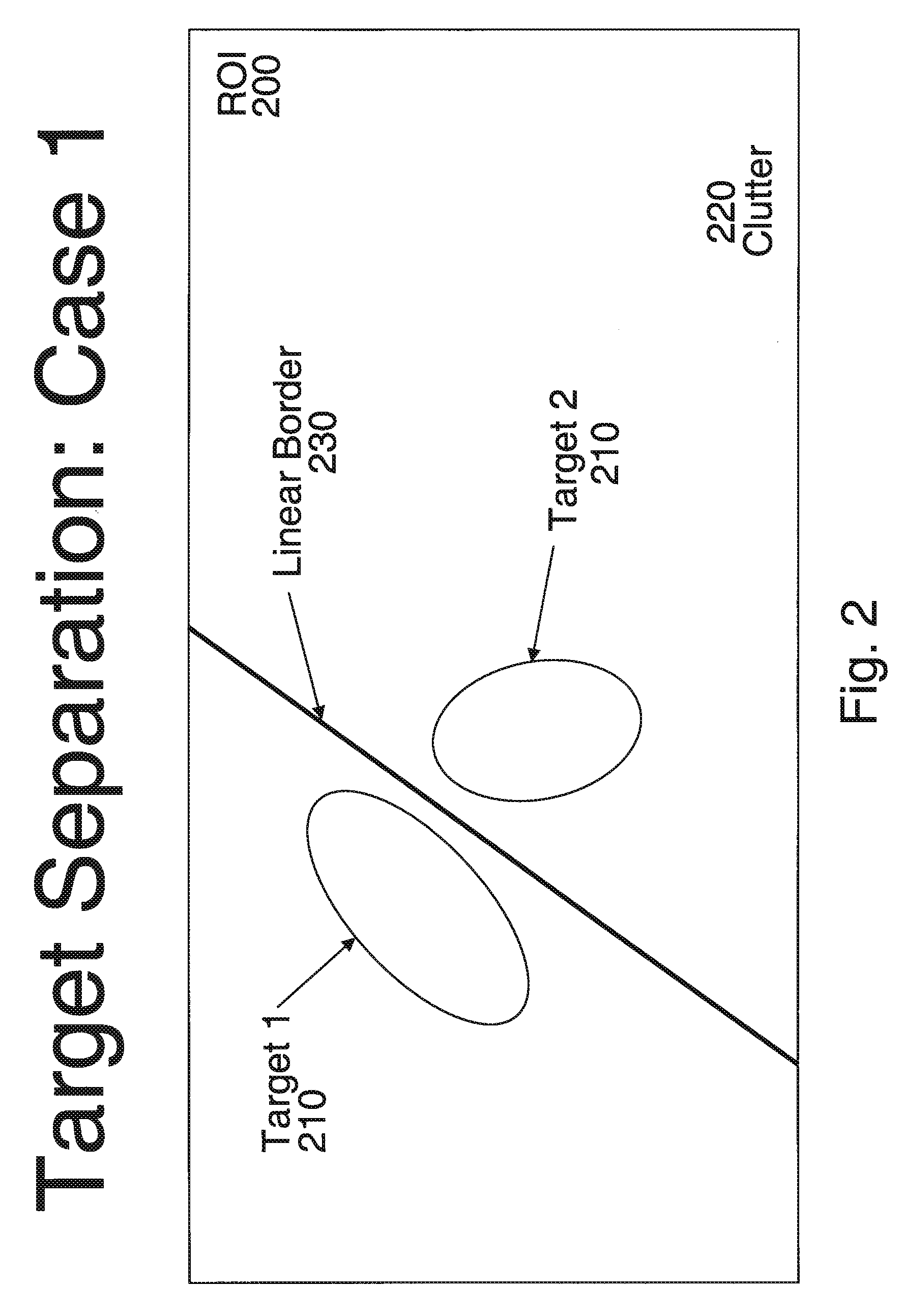System and method for target separation of closely spaced targets in automatic target recognition
a target separation and target technology, applied in the field of system and method for target separation of closely spaced targets in automatic target recognition, can solve problems such as difficult processes and difficulties
- Summary
- Abstract
- Description
- Claims
- Application Information
AI Technical Summary
Problems solved by technology
Method used
Image
Examples
Embodiment Construction
[0041]The illustrative embodiments that follow are only exemplary applications of the present invention and not intended to limit the scope of the invention.
[0042]The Target Separation Algorithms (TSAs) improve the results of the Automatic Target Recognition (ATR) process in imaging applications like Synthetic Aperture Radar (SAR) bitmap interpretation. Before attempting to identify specific targets using ATR, it helps to separate the different objects and targets (objects of interest) from the background and from each other.
[0043]The automatic recognition process is shown on FIG. 1. The input for this process is a SAR image (bitmap) 100. Three coordinates characterize each pixel of this image: the row number x and column number y in the bitmap along with the signal magnitude P(x,y). The first step of recognition is Automated Target Cueing (ATC) 110. In this step, the system localizes Regions of Interest (ROIs, also called chips) in the SAR bitmap. Chips are small areas on the bitma...
PUM
 Login to View More
Login to View More Abstract
Description
Claims
Application Information
 Login to View More
Login to View More - R&D
- Intellectual Property
- Life Sciences
- Materials
- Tech Scout
- Unparalleled Data Quality
- Higher Quality Content
- 60% Fewer Hallucinations
Browse by: Latest US Patents, China's latest patents, Technical Efficacy Thesaurus, Application Domain, Technology Topic, Popular Technical Reports.
© 2025 PatSnap. All rights reserved.Legal|Privacy policy|Modern Slavery Act Transparency Statement|Sitemap|About US| Contact US: help@patsnap.com



